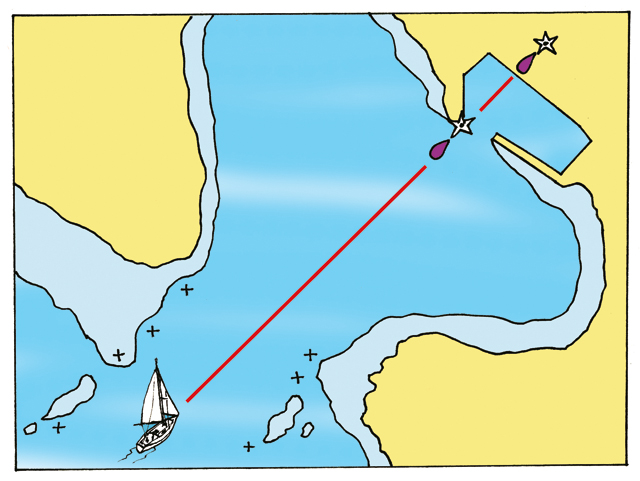
When a vessel is navigating in coastal areas, it may be possible to observe two fixed objects, especially landmarks that are directly in line. In such a case, the watch keeping officer can find the compass error instantly because when two objects are seen in a line, the ship lies on the same line, called a transit line. The bearing taken in such a case is called a transit bearing and can be compared with the true bearing that is measured from the navigational chart. The difference between the observed bearing and the true bearing is the compass error.
Following is the procedure to obtain the compass error by transit bearings:
Select two conspicuous objects on the chart and measure the true bearing between them. The watch keeping officer must be ready before the ship arrives in line (in transit) with the two objects. When they are observed exactly in line with each other, observe the compass (gyro or magnetic) bearing of the object. Compare the true bearing with the observed bearing and the difference is the compass error.




